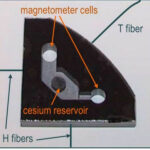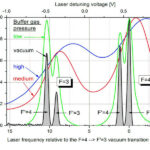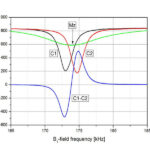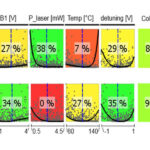- Home
- Research
- Quantum Systems
- Research results
- Optically Pumped Magnetometer in LSD Mz Mode
Optically Pumped Magnetometer in LSD Mz Mode
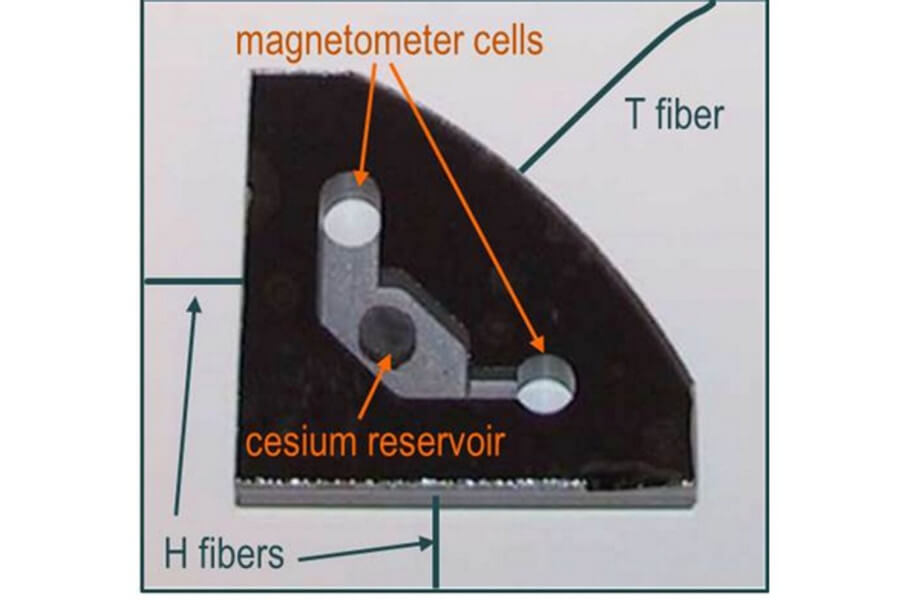
12.04.2018
The newly developed LSD Mz working mode for optically pumped magnetometers is hereby introduced. LSD stands for “light shift dispersed” because a dispersive dependence on the magnetic field is generated by subtracting the signals of two integrated cesium vapor cells, which are pumped in such a way that a strong opposite light shift occurs.
By Volkmar Schultze // Bastian Schilling // Rob IJsselsteijn // Ronny Stolz
The development of the LSD Mz mode follows the basic premise of IPHT to employ small cesium vapor cells manufactured via MEMS technology for optically pumped magnetometers to produce integrated detector arrays [1]. Figure 1 shows the currently used configuration with two connected cells. In order to obtain good magnetic field resolutions despite the small cell volume of only 50 mm3, we have already developed the so-called light-narrowing (LN) method [2]. This method uses a medium-to-high nitrogen buffer gas pressure, causing the absorption lines of the F=3 and F=4 hyperfine levels to overlap (see Figure 2). At the same time, pumping no longer occurred from the commonly-used F=4 level, rather the laser was detuned to F=3. In combination with a strong increase in pump performance, the magnetic field resolution was able to be improved from about 200 fT/Hz1/2 to 40 fT/Hz1/2 in normal Mx operation.
The Mx mode provides the best magnetic field resolution at an angle of about 45° between the magnetic field and the pump direction. In this configuration, however, the redistribution of the population of the Zeeman levels in the hyperfine-structure ground states leads to a spin-exchange relaxation [3], which worsens the potentially possible magnetic field resolution. In addition, the strong, detuned pumping of the LN method causes a large light shift, which results in a falsification of the Larmor frequency fL and thus of the measured magnetic field B0 in accordance with the relationship fL=γ∙B0 (whereas γ is the gyromagnetic ratio of cesium, a material constant).
In the new LSD Mz mode, the problems of the LN method are overcome and even used in a targeted manner [4]. The LN approach of detuned strong pumping at F=3 remains unchanged. However, Mz mode is used where the B0 field and pump direction are parallel. In Mz mode, the measuring signal is a pure increase in dc absorption of the pump light when the frequency of the B1 field, which is additionally required for optically pumped magnetometers, is at the Larmor frequency. As Figure 3 shows, LN operation increases this absorption significantly (up to 75% of the photo signal measured behind the cell). Two cells are pumped which have identical properties due to their integration with a common Cs reservoir (see Figure 1). However, the circularly polarized pump light has opposite helicity. As a result, the two measuring signals are shifted by the same amount compared to the undistorted Larmor frequency but in opposite directions (see Figure 3). The difference between these two signals now has a nice dispersive character with zero crossing at exactly the Larmor frequency. A further advantage of the LSD Mz mode is that (due to the pure dc measurement) the setting of the phase of the B1 field is no longer important, thereby eliminating another potential source of error in the magnetic field measurement.
The parameters of the LSD Mz setup were optimized with statistical methods for which the optiSLang program [5] was used for the first time to control and optimize a real system. Figure 4 shows that with high reliability of statistical optimization (large CoP total), the dependence of the optimized parameter “magnetic field resolution” on the setting of the individual operating parameters is low. As a result, a magnetic field resolution of 10 fT/Hz1/2 can be achieved at optimal operating parameters at both high and medium buffer gas pressure. Thus, the LSD Mz configuration achieves a further improvement over LN operation. Furthermore, this is the best resolution that is currently achieved with integrated optically pumped magnetometers operating at earth field strength.
Funded by: BMWi

